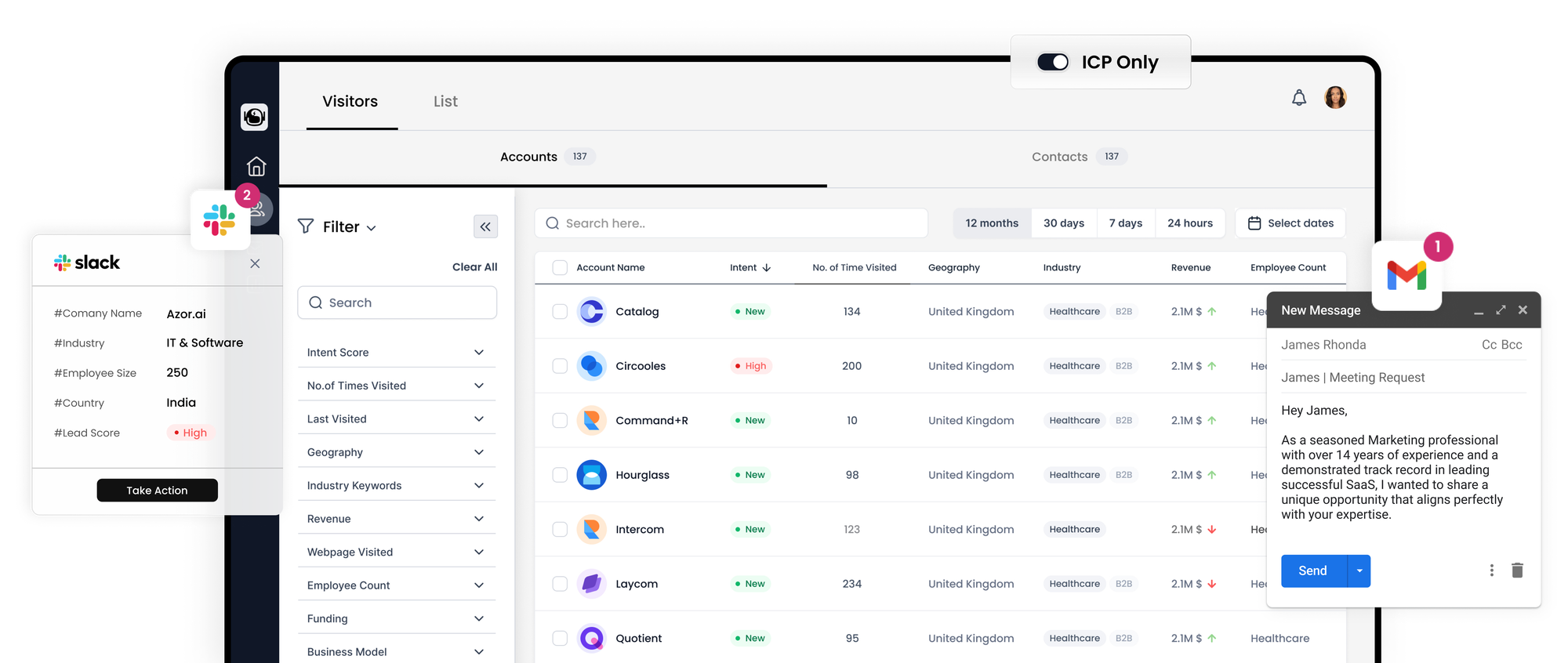The 7 Ps Marketing Mix Model Explained

Defining the 7 Ps of Marketing
The 7 Ps of marketing, also known as the marketing mix, was a concept developed by E. Jerome McCarthy in the 1960s. This framework includes Product, Price, Place, Promotion, People, Process, and Physical Evidence, and it guides businesses in their marketing strategies.
Businesses that integrate the 7 Ps into their marketing approaches, whether through digital or traditional channels, tend to be more successful in reaching their marketing objectives.

Dissecting the 7 Ps of the Marketing Mix
Here's how each component of the 7 Ps contributes to a robust marketing strategy:
1. Product
This refers to what a company is selling, which could be a tangible good or a service. The product must be designed and packaged to meet the needs of the target market. Understanding the market is crucial for aligning the product to consumer demands.
Content marketing, utilized by a large percentage of both B2B and B2C marketers, is a key strategy in promoting products as part of an overall marketing plan.
2. Price
Price is what the customer pays for the product. Competitive yet profitable pricing is essential. Strategies like discounts and value-based pricing influence consumer decisions and can cater to different market segments, such as luxury goods or sustainable products.
Consumers are drawn to competitively priced products, and many are willing to pay more for sustainable offerings or perceive discounts as key purchasing factors.
3. Place
This pertains to how and where a product is sold and must be convenient for the consumer. It might include a physical store, an online platform, or a hybrid approach.
With consumers increasingly blending online and offline shopping experiences, ensuring product accessibility across various channels is vital.
4. Promotion
This aspect involves the methods used to advertise and sell the product, such as advertising, sales promotions, and social media marketing. The promotion must resonate with the intended audience and be clear and engaging.
Effective content marketing is a significant promotional tool, and social media marketing has been linked to higher achievement in marketing objectives.
5. People
This group encompasses all individuals involved with the business, including employees and customers. Creating a positive experience for these people is critical, as customer service quality directly impacts satisfaction.
Customer experience is a primary reason for brand loyalty or switching, highlighting the importance of investing in talent and customer service training.
6. Process
The process involves the procedures and methodologies a business employs to deliver its product or service. Efficiency in these processes can significantly enhance customer satisfaction.
Streamlined processes are associated with improved customer satisfaction, and the integration of data analytics can bolster the success of these business processes.
7. Physical Evidence
The physical aspects that customers encounter, such as packaging and overall brand presentation, need to reflect and reinforce the brand image.
The shopping environment and personalized brand experiences are factors that can significantly influence consumer purchasing decisions.
Final Insights
The 7 Ps framework remains a vital tool in crafting marketing strategies. It aids businesses in considering all aspects of the product offering and how each element contributes to a comprehensive marketing approach that resonates with consumers and stands out in a competitive landscape.
Exploring the Marketing Mix and Its Evolution
Extent of 'Ps' in Marketing Strategy
In the realm of marketing, the marketing mix is a classical framework that organizations employ to promote their brand or product within the market. This concept encompasses a set of actionable marketing tools that a company deploys for its market offering.
Originally, this model was built on four fundamental pillars: product, price, place (location), and promotion. However, with the growing complexity of marketing, this model evolved. The marketing mix was extended to include three additional Ps: People, Process, and Physical Evidence, particularly relevant in the context of online marketing strategies.
Businesses utilize the marketing mix to guide their marketing decisions at various organizational levels. The marketing mix aids in:
- Recognizing strengths and addressing weaknesses
- Enhancing adaptability and competitiveness
- Fostering collaboration across departments and with partners
Nonetheless, the identification of the target market's persona is a prerequisite to effectively deploying the 4Ps or 7Ps of marketing. An in-depth understanding of the intended audience is necessary to fine-tune the marketing mix. Without this insight, initiating a marketing strategy would be challenging.
There are also the 4 A's (Acceptability, Affordability, Accessibility, and Awareness) and 4 C's (Customer, Cost, Convenience, and Communication) of marketing which further expand upon traditional marketing models.
Significance of the 7Ps Marketing Mix
The 7 Ps are vital for businesses to understand and implement within their marketing strategies, with each component playing a key role in crafting a marketing mix that resonates with target customers and meets business objectives.
Here’s why the 7 Ps are significant:
1. Customer Understanding
The 7 Ps framework helps businesses grasp their customers' needs, creating offerings that fulfill these requirements. This understanding can elevate customer satisfaction, distinguish a business from its competition, inform realistic marketing objectives, and optimize the marketing investment.
2. Competitive Strategy
By analyzing the competitive landscape through the 7 Ps, businesses can develop strategies that exploit their competitors' weaknesses and reinforce their own strengths. This might lead to modifications in pricing strategies or other aspects critical to improving market share.
3. Effective Marketing Campaigns
Implementing the 7 Ps ensures that all aspects of a marketing campaign are cohesive. Integrating statistics and keyword-rich content into marketing efforts can strengthen a brand's authority and search engine rankings, enhancing online visibility.
4. Boosting Sales and Profitability
Employing the 7 Ps can lead to increased sales and profitability. Well-trained employees in customer service and streamlined processes contribute to higher customer satisfaction and retention, which, in turn, bolster profits.
Implementing the 7Ps Marketing Mix Framework
Utilizing the 7Ps of the marketing mix is a comprehensive approach to crafting and implementing marketing strategies across various business types. Here's how to apply each 'P' effectively:
Prioritize the Product
Your marketing efforts revolve around the product. Ensure it is of high quality, appeals to your target audience, and stands out in the market. Its design and functionality should address the specific needs of your customers.
Price it Right
Setting your product’s price involves balancing competitiveness with profitability. Consider both the market standard and the perceived value of your product to your customers.
Placement Strategy
Selecting the right distribution channels is crucial. The ‘place’ where customers can purchase your product should be convenient and aligned with their purchasing habits.
Proactive Promotion
Awareness is key to conversion. Use diverse marketing channels, such as digital advertising, social media, and public relations, to inform potential customers about your product.
People at the Forefront
The success of your business hinges on the people involved – from employees to customers. Train your team to deliver excellent customer service and foster positive interactions at every touchpoint.
Process Optimization
An efficient, user-friendly purchasing process enhances customer experience. Ensure seamless navigation and transaction processes, be it through your website or physical store.
Project Physical Evidence
The tangible aspects of your business, like your store layout, packaging, and overall aesthetics, should reinforce a positive brand image and reflect the quality of your service.
By integrating these seven components into your marketing strategy, you can create a cohesive and effective campaign that resonates with your target audience and drives sales.
Summing Up the 7 Ps of Online Marketing
The 7 Ps framework stands as a cornerstone in the realm of online marketing, offering businesses a robust blueprint to craft impactful marketing strategies that propel them towards their objectives. This comprehensive model ensures that all facets of a marketing initiative are in harmony with the intended audience and the overarching aims of the business. By grasping the significance of each component and weaving in pertinent data and analytics, companies can enhance their credibility, elevate their search engine visibility, and drive enhanced outcomes from their marketing endeavors. Pursuing an MBA in marketing can further refine these competencies, equipping professionals with advanced expertise for a successful career in marketing.
